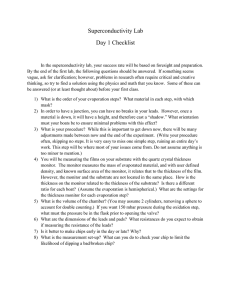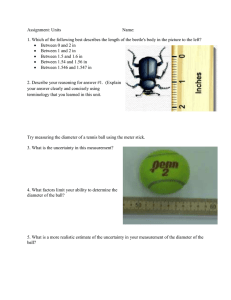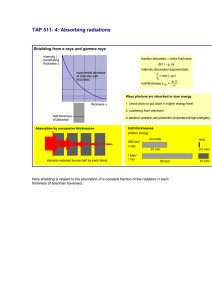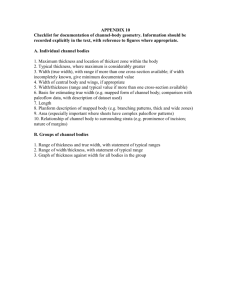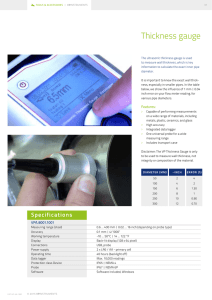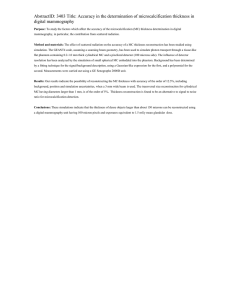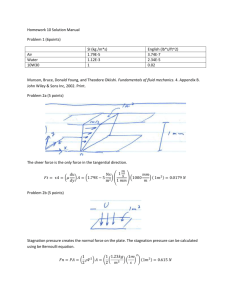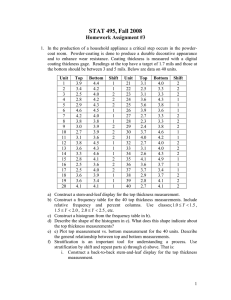Physics - Pierce Public Schools
advertisement
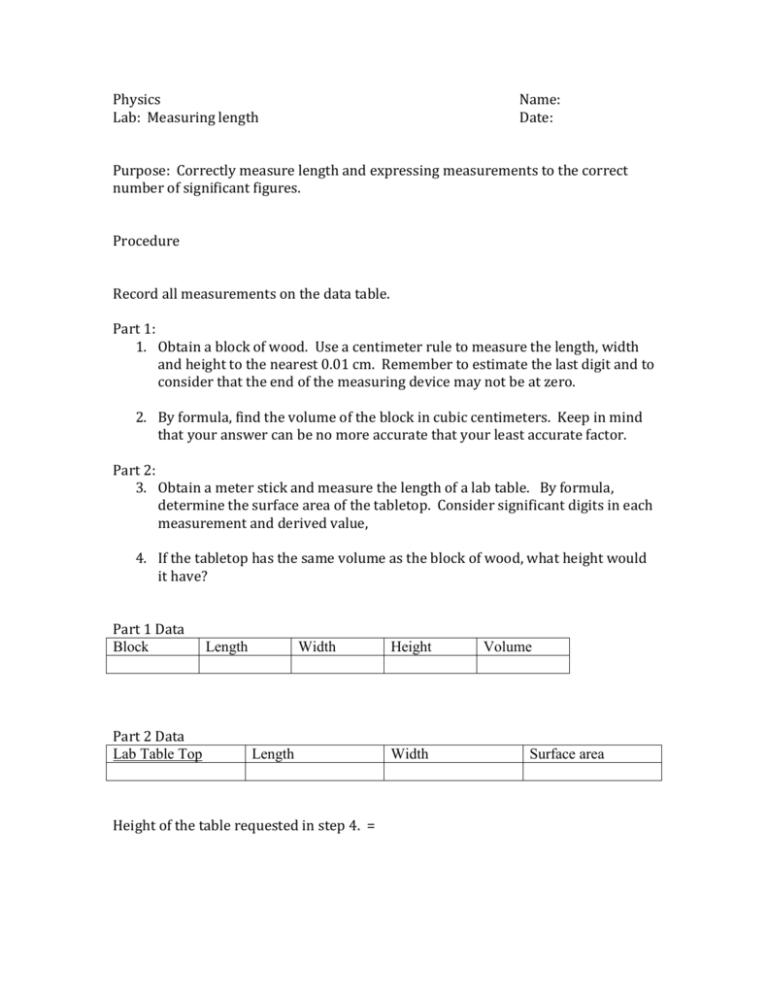
Physics Lab: Measuring length Name: Date: Purpose: Correctly measure length and expressing measurements to the correct number of significant figures. Procedure Record all measurements on the data table. Part 1: 1. Obtain a block of wood. Use a centimeter rule to measure the length, width and height to the nearest 0.01 cm. Remember to estimate the last digit and to consider that the end of the measuring device may not be at zero. 2. By formula, find the volume of the block in cubic centimeters. Keep in mind that your answer can be no more accurate that your least accurate factor. Part 2: 3. Obtain a meter stick and measure the length of a lab table. By formula, determine the surface area of the tabletop. Consider significant digits in each measurement and derived value, 4. If the tabletop has the same volume as the block of wood, what height would it have? Part 1 Data Block Part 2 Data Lab Table Top Length Width Length Height of the table requested in step 4. = Height Width Volume Surface area Part 3 5. Use a cm rule to measure the thickness of 50 pages in the physics book. 6. Use a cm rule to measure the thickness of 100 pages in the physics book. 7. Use a cm rule to measure the thickness of 200 pages in the physics book. 8. Determine the average thickness of one page from the measurements taken in step 5-7. 9. Now use the cm rule and estimate to the best of your ability, the thickness of a single page in the physics book Part 3 Data Thickness Average thickness of 1 page 50 pages 100 pages 200 pages Single page XXXXXXXXXXXXXXXXXXXXX Questions. 1. What is a significant digit? 2. Why is a measurement less accurate if you use the end of a meter stick as a zero point? 3. In part 3, which measurement for a single page is most accurate? Why? Conclusion:


